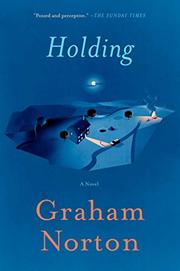The Western Wind Samantha Harvey (2018)
The first-person narrator of this mystery novel is a parish priest, John Reve, in an isolated English village in the year 1491. Novelist Samantha Harvey recreates the late medieval scene accurately, going against some conventional assumptions about priests, religious beliefs, and intelligence in the Middle Ages. John Reve is a smart and well-read fellow who gently corrects his parishioners’ superstitions. Readers are immediately pulled into the story of how Tom Newman, the wealthiest man in town, may have died and what Reve is going to do about the death.
The story starts out on Shrove Tuesday, the celebratory day before the forty days of the Christian penitential season of Lent. If the tale seems cryptic at first, that’s because the rest of the novel works backwards, day by day, with Reve’s account of each day filling in more of the details of what really happened to Newman on the Saturday before Shrove Tuesday. Clever markers in the surroundings are reminders of the timeline—food noted as being left over on Tuesday is being prepared on the previous days, for example. And we step back to view the European zeitgeist at a time right on the cusp of the Reformation. In a memory of a conversation with Newman, Reve recounts how Newman pronounced a Protestant view of the primacy of the individual soul, without the need for priestly intervention with God: “I can put my case to God and he can forgive me or not, and he can punish me or not. I’m not sure he needs you to arbitrate.” (175)
The prose throughout is simple yet elegant:
“The vacant happiness of eating filled me; the meat was tastier than any lifetime of bread. One mouthful of it scythed a whole field of summer wheat to stalk and husk.” (89)
“It was a warm afternoon. The church was mellow and dusty, it had its summer smell of ponds and peaches.” (175)
As you can tell from my many blog posts about novels set in the Middle Ages, I’m a big fan, but I think that anyone who loves historical novels—especially mysteries—would find The Western Wind highly satisfying.
The Last Hours Minette Walters (2018)
My family expressed cynicism upon seeing the cover of this novel: “Really? A book about the Black Death? Isn’t the daily news depressing enough?” Although I was also skeptical, this book presented an appealing plague scenario: In the absence of her husband, the wise lady of a Dorsetshire manor orders all her serfs into the manor enclosure, shuts the doors, and has the bridge over the moat burned. Of course, there are echoes of Boccaccio’s Decameron, in which a group of aristocrats sought to avoid the Black Death by holing up in a villa outside Florence, telling 100 stories to pass the time. The Last Hour is one story, not 100, but there’s that same reader’s itch to find out if the isolation gambit works. And Walters throws in a murder mystery to boot.
Like The Western Wind, reviewed above, The Last Hours offers characters who are literate and savvy—some might say they’re anachronistic in their questioning of divine retribution as a cause for the Black Death. They guess that rats might be involved instead. The portrayals of daily living and survival techniques in 1348 are well crafted if long-winded, especially in the middle third of the novel. Readers are not spared any of the squalor or cruelty of the era. I was quite let down to find on page 537 that the story is “to be continued.” So I’ll have to look for the sequel to The Last Hours to find out the fates of those Dorsetshire serfs.
For my full essay on the sub-genre of medieval mysteries, click here.





